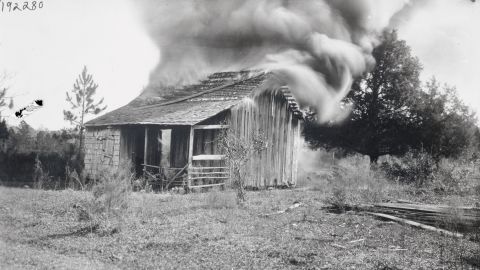CNN
—
In the years after World War I, Black people were thriving in the central Florida town of Rosewood when a White mob driven by racial animosity decimated the entire community within days.
Rosewood became the site of a horrific massacre 100 years ago, during the first week of January in 1923. This rural town was one of several Black communities in the US that suffered racial violence and destruction in the post World War I era. The acts of racial violence resulted in the loss of economic opportunity and inequality for generations of people of color.
There were about 200 people living Rosewood, a town in Levy County located about an hour southwest of Gainesville and about 9 miles from the Gulf of Mexico, at the time of the massacre. Mostly Black families lived in Rosewood and were landowners, farmers and worked at a nearby sawmill.
Violence broke out on January 1, 1923 when a White woman from the nearby town of Sumner claimed she was assaulted by a Black man, historians said.
A group of people in Sumner, which had a mostly White population, began searching for the alleged and unidentified man, turning into a violent mob that lasted for a week. At least eight people were killed, including six Black people and two White people. Homes, businesses and churches were burned and Black residents fled into the swamps, later settling in Gainesville and other cities.
Maxine D. Jones, a historian at Florida State University who has the lead researcher on a study about the massacre commissioned by the Florida legislature in 1993, said the massacre wiped out the entire community and was hardly discussed by survivors and historians for years.
“The story was buried for almost 70 years,” said Jones. “We retrieved this story, and it’s important to remember the past, we can’t forget about the past regardless of how ugly it is.”
State lawmakers have described the massacre as a “unique tragedy in Florida’s history” and recognized that no one was held accountable for it.
In 1994, then-Florida Gov. Lawton Chiles signed a bill to compensate survivors and their descendants. Florida House Bill 591 is considered a model for reparations for Black Americans.
The legislation said local and state officials were…
Click Here to Read the Full Original Article at CNN.com – RSS Channel – HP Hero…

